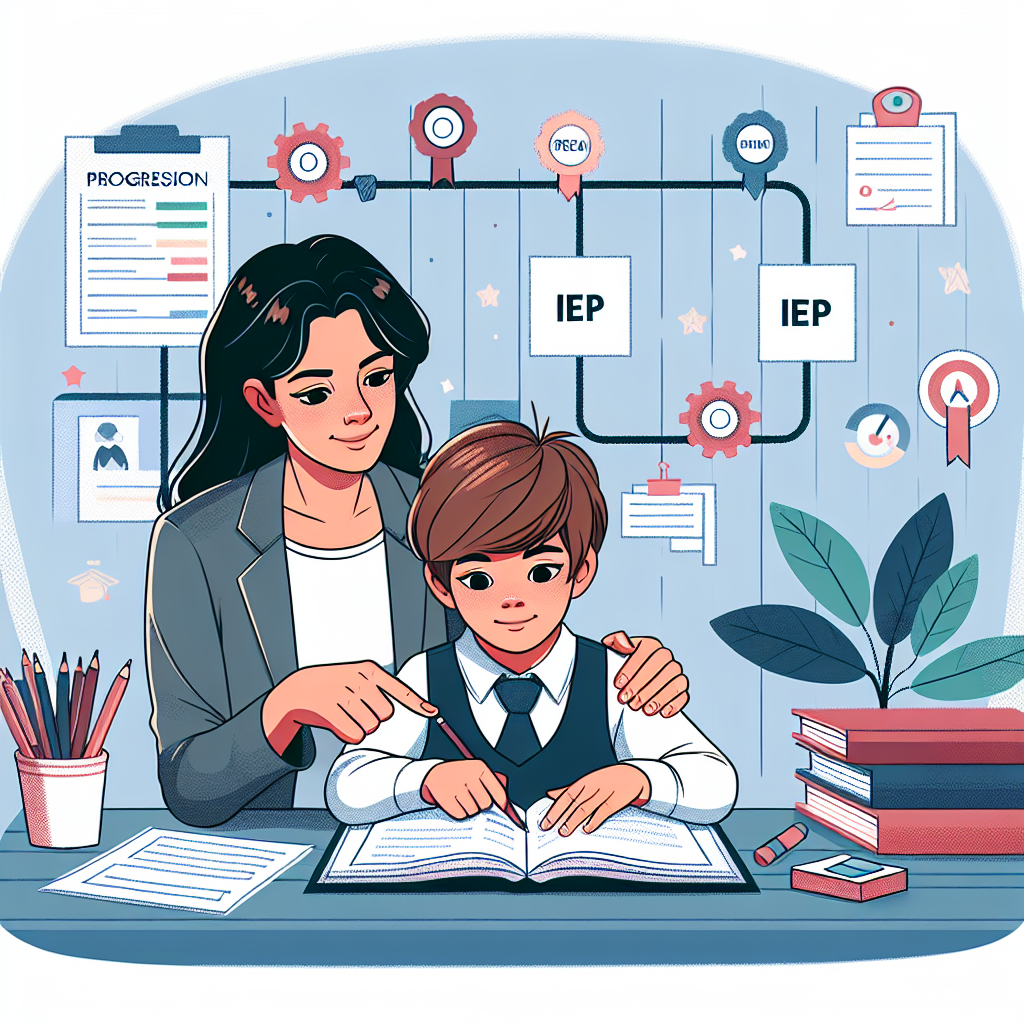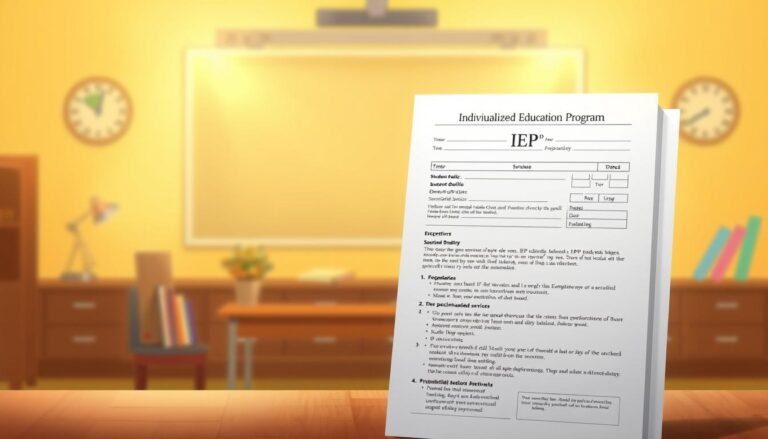
From Plans to Progress: Helping Your Child Excel with Their IEP – The Ultimate Guide
Introduction
Navigating the landscape of special education can be overwhelming for many parents. The Individualized Education Program (IEP) is a key tool in ensuring that children with disabilities receive the services they need to succeed in school. But how can parents transform IEP plans into tangible progress? In this guide, we’ll delve into “From Plans to Progress: Helping Your Child Excel with Their IEP,” offering practical insights, actionable steps, and real-world examples to empower you in your journey.
Understanding the IEP
What Is an IEP?
An Individualized Education Program (IEP) is a legally binding document that outlines the educational plan for a child with a disability. According to the Individuals with Disabilities Education Act (IDEA), every child with a disability is entitled to a Free Appropriate Public Education (FAPE). This includes access to specially designed instruction, related services, and accommodations tailored to meet the unique needs of the child.
The Components of an IEP
An IEP typically includes several essential components:
| Component | Description |
|---|---|
| Present Levels of Performance | Assessment of the child’s current abilities |
| Measurable Goals | Specific, achievable objectives for improvement |
| Services and Supports | Tailored interventions and accommodations |
| Participation in General Education | Inclusion in regular classroom activities |
| Transition Plan | A strategic plan for post-school life |
By grasping these components, you can better advocate for your child’s specific needs and ensure that they receive the support necessary for success.
The Role of Parents in the IEP Process
Advocating for Your Child
As a parent, your advocacy plays an essential role. You are the expert on your child’s strengths, weaknesses, and needs. Your active participation can create a more effective IEP. This means attending IEP meetings, asking questions, and contributing to discussions about your child’s learning strategies.
Building Strong Relationships
Cultivating a relationship with teachers, specialists, and school administrators can significantly impact your child’s educational experience. Establish regular communication, keeping the lines open for updates and feedback. When everyone is on the same page, it helps transition “From Plans to Progress: Helping Your Child Excel with Their IEP.”
Case Study #1: James’ Journey
Background: James, a seven-year-old diagnosed with ADHD, struggled with attention in class. His IEP included small group instruction and frequent breaks.
Implementation: With parental advocacy, James’ mother collaborated closely with his teacher to implement the accommodations detailed in the IEP. The teacher provided visual aids and set up a reward system for completed tasks.
Outcome: Over the year, James showed remarkable progress in his focus and grades, transforming his IEP goals into achievements. This case highlights the importance of following through and collaborating within the IEP framework.
Setting Measurable Goals
Importance of SMART Goals
Goals in an IEP need to be SMART: Specific, Measurable, Achievable, Relevant, and Time-bound. This framework ensures clarity, helping both parents and educators track progress effectively.
Example of a SMART Goal
- Specific: Improve reading skills.
- Measurable: Reach a grade level of 2.5.
- Achievable: Based on previous assessments.
- Relevant: Aligns with state educational standards.
- Time-bound: Achieve by the end of the school year.
These structured goals can further help in “From Plans to Progress: Helping Your Child Excel with Their IEP.”
Collaboration Is Key
Working with Educators and Specialists
Building effective partnerships with your child’s educational team is essential. Schedule regular meetings to ensure everyone is aligned with the IEP’s objectives and progress.
Inclusion in General Education
Whenever possible, promoting a least restrictive environment (LRE) can enhance your child’s social skills and self-esteem. Discuss opportunities for inclusion with the team, focusing on how they can participate in a general education setting.
Case Study #2: Maria’s Transformation
Background: Maria, a 10-year-old with learning disabilities, was placed in special education classes without access to general education.
Implementation: With parental advocacy, Maria’s team pivoted toward an inclusive strategy. They gradually integrated her into general classrooms with support from a paraeducator.
Outcome: Over six months, Maria thrived academically and socially, leading to her receiving standard curriculum instruction. This demonstrates the powerful impact of collaboration in facilitating progress.
Monitoring Progress
Regular Assessments and Feedback
Monitoring your child’s progress is vital. Schedule regular evaluations to ensure that the IEP goals are being met and adjust as needed based on data-driven outcomes.
Utilizing Data
Keep a log of assessments, report cards, and any feedback from teachers. Being prepared for IEP meetings with evidence of progress—or lack thereof—can help in making informed decisions about necessary changes.
Case Study #3: Sam’s Success Story
Background: Sam, an 11-year-old with autism, faced challenges in communication and social skills.
Implementation: His IEP included speech therapy and social skills groups. His parents engaged the team in setting realistic expectations and refining goals based on his progress reports.
Outcome: By focusing on small, achievable goals, Sam made great strides in communication, ultimately improving his ability to interact with peers. This emphasizes the importance of monitoring adjustments to create meaningful progress.
Overcoming Challenges
Addressing Common IEP Concerns
Resistance from Educators: It’s essential to approach concerns diplomatically, focusing on collaboration.
Inadequate Resources: Open discussions about what resources are available and how they can be maximized to suit your child’s needs.
Changes in the IEP: Be prepared for changes, as children evolve. Regular reassessments can ensure the IEP remains relevant.
Transition Planning: As your child ages, transitioning to middle school or high school can be daunting. Collaborate on a transition plan early, focusing on for post-school life.
- Emotional Support: Understand that a disability can hinder a child’s self-esteem. Address emotional needs with the same urgency as academic and social skills.
Inspiring Example: From Plans to Progress
Consider the story of a young girl named Lily, who had significant learning delays. With her parents’ support, dedicated teachers, and a well-designed IEP, Lily showed immense growth. By consistently measuring and adjusting her goals, she progressed from below grade level to thriving in advanced classes, a true testament to the potential of collaboration and a robust IEP.
Conclusion
Transforming “From Plans to Progress: Helping Your Child Excel with Their IEP” is not an easy task but one of profound importance. Through understanding the IEP components, actively advocating for your child, setting measurable goals, and engaging in collaboration, you can make a significant impact.
Remember, every child’s journey is unique. As a parent, your role is pivotal, providing the love, support, and advocacy necessary for your child to flourish in their educational environment. Embrace the challenge and be inspired by the progress you can help them achieve.
Frequently Asked Questions (FAQs)
1. What is the purpose of an IEP?
The IEP ensures that children with disabilities receive an education tailored to their unique needs, helping them access the general curriculum effectively.
2. How often should an IEP be reviewed?
An IEP must be reviewed at least annually, but it can be adjusted more frequently if the child’s needs change.
3. Can I request changes to the IEP?
Yes! As a parent, you have the right to request a review of the IEP if you believe changes are needed to better support your child.
4. What happens if the school does not follow the IEP?
If the school fails to implement the IEP, parents should first discuss concerns with the team and, if unresolved, can seek mediation or legal counsel.
5. How can I best support my child at home?
Stay engaged with your child’s education by reinforcing skills at home, maintaining communication with teachers, and advocating for resources as needed.
By actively participating in the IEP process and staying informed, you can become a powerful ally in your child’s educational journey, paving the way for future successes.
















